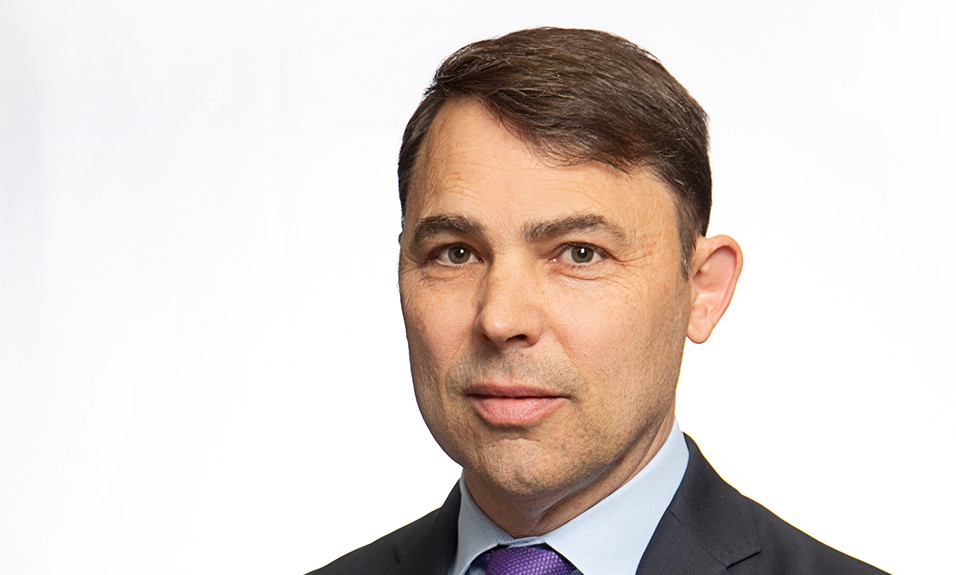Treatment thought leader Siobhan Morse outlines key areas for improving care
By William Wagner
November 12, 2020Without excellent care, most addiction outcomes are doomed to land on the side of failure. That’s an obvious point, but less clear is the actual path toward facilitating the quality results everyone in the treatment industry covets.
This is a process. At the end of the day, whether we have a substance use disorder or not, many of us, by the time we’re 18, have something we’re recovering from.”—Siobhan Morse, MHSA, CRC, CAI, MAC, divisional director of clinical services-research/special projects in the Behavioral Health Division of Universal Health Services
In a recent webinar staged by the Psychiatry & Behavioral Health Learning Network, Siobhan Morse—MHSA, CRC, CAI, MAC, divisional director of clinical services-research/special projects in the Behavioral Health Division of Universal Health Services (UHS)—laid out four key ways to steer the treatment industry toward better outcomes. Morse is a thought leader in the behavioral health field, having been awarded the 2020 National Alcohol and Drug Addiction Recovery Month Presidential Proclamation this fall.
Here are the four steps she presented in the webinar for ensuring quality addiction treatment:
1. Care for the Caregiver
In order to take good care of their patients, treatment professionals must first take good care of themselves. And Morse believes this is an area where the industry sometimes falls short. She calls it “compassion fatigue.”
“It’s really common,” she said, “even more so these days given the challenges we’re facing in healthcare in general.”
She points to a couple examples of frayed treatment staff. One is what she refers to as the “eye roll” among staff members during a discussion in a team meeting about, say, a patient who deviated from the program. “To me, that’s not an indicator that the therapist isn’t a good therapist,” she said. “It says to me that the person is getting a little bit burnt out.” Another is when the therapeutic language used by the staff begins to deteriorate, or, as she puts it, “when the staff starts to default into saying things like, ‘The patient’s just not ready.’”
Occurrences such as these signal potential breakdowns in patient-staff relationships, which can have dire consequences. Data shows that positive interactions between staff members and patients are crucial to producing better outcomes. (Think of it as trying to achieve the opposite effect of Nurse Ratched’s in One Flew Over the Cuckoo’s Nest.)
“When we build those trusting therapeutic relationships with patients, we are actually impacting their ability to recreate that in their life,” Morse said. “That speaks to the importance of having staff that is capable of being in that compassionate therapeutic role. We need to pour into our staff so they can continue to pour into patients.”
As with any business, a little TLC from the powers-that-be can go a long way toward boosting staff morale. Morse notes that this can be a gesture as small as giving a staff member a special parking spot for a month or bringing a food truck on site for a day. Whatever form the pat on the back might take, she says it’s a matter of “making sure the highest levels of leadership personally recognize the people who do the work.”
2. Inclusion of Family and Loved Ones
This is connected to step No. 1, as family members are caregivers, too. Often, however, they also become victims. Morse stresses that the key here is to include family members in the recovery plan and ensure they themselves receive the care they need.
“We know so much more about substance abuse disorder and how it’s a family disease, and how it can impact entire family systems,” she said. “One of the best things we can do for families is to begin offering them the opportunity to understand the disease better.”
According to research cited by Morse, family members of someone with alcohol use disorder (AUD) or substance use disorder (SUD) utilize more healthcare services than do people from the general population. “The impact of having [a family member] with substance use disorder is so widespread and can create the need for more medical services,” she said.
Morse feels the addiction treatment industry could do a better job of providing access to services for loved ones of patients. In part, this entails “creating referrals that are more than just a piece of paper. This is an entire family healing process, and being able to address that and be part of that solution is so key in creating quality treatment.”
3. Recovery-oriented Focus
In a “State of the Industry” survey of 378 treatment professionals at various levels that was conducted by the analytics platform Gloo in early 2020, “recovery-oriented focus” was ranked as the most important category in creating organizational excellence, with an average rating of 6.4 on a scale of 1 to 7.
“There’s a very baseline distinction to be made that there are curative efforts and recovery-oriented efforts,” Morse said. “Most of us in this field know we need to be on the recovery-oriented side, focusing on the long-term and chronic conditions of a substance use disorder, as opposed to considering that treatment is a multiday, acute solution for an acute disorder. That really doesn’t work.”
For patients, the recovery-oriented route centers on these elements:
- Making informed and healthy choices.
- Living in a safe and stable home.
- Finding meaning in daily life through avenues like work, education and volunteerism.
- Building a strong support network that provides love and hope.
“This is a process,” Morse said. “At the end of the day, whether we have a substance use disorder or not, many of us, by the time we’re 18, have something we’re recovering from.”
4. Measurement-based Outcomes
Morse says roughly half of addiction treatment organizations collect only minimal post-care data. It’s a shortcoming that has to be addressed in order to improve addiction outcomes.
“[Measurement-based outcomes] has been a big topic in substance use disorder for some time, yet the industry has not come together fully [on it] yet,” she said. “How do we begin to move that needle? We really need to begin looking at data.”
As it is now, organizations seem to operate more from hunches and intuition than hard numbers. Said Morse, “We need to be able to have data-based information that demonstrates what we’re doing well.”
Ultimately, the collection and dissection of data is what will drive the industry forward.
“Using outcome data can facilitate different levels of decisions, everything from a treatment plan to financial decisions to consumer decisions,” Morse said. “Data allows us to ask questions. It is not until we ask a question of that data that we begin to develop information. At the end of the day, information is how we make decisions.”
For a deeper dive into Morse’s four steps, you can watch the full webinar.
Photo: Jungwoo Hong














